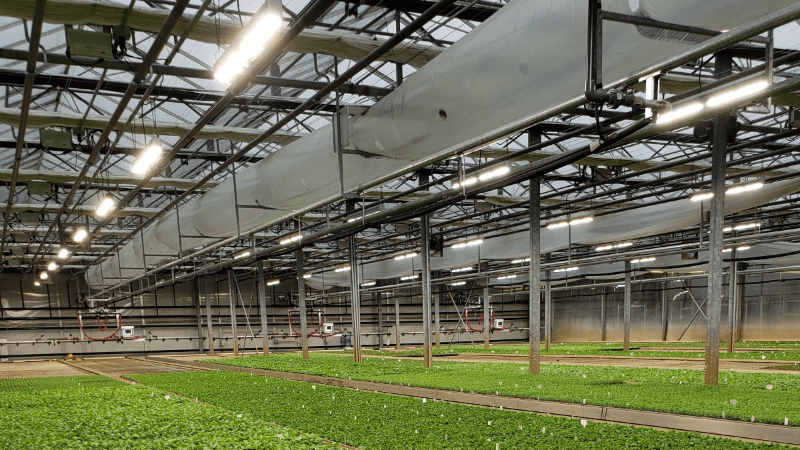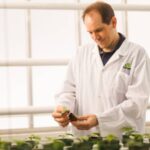
Technically Speaking: Advancements in horticultural lighting
The science, engineering and application of horticultural lighting advances with developments in light-emitting diode (LED) technology. In the past decade, efficacy of LED fixtures has more than doubled, dimmability has become common, tolerance to greenhouse conditions has improved, and standards specific to LED lighting exist to promote energy efficiency and durability of fixtures. However, equally important are systems that control their operation.
Supplemental greenhouse lighting. The biggest advances with greenhouse LED lighting have been the increase in light output and efficacy, and decrease in fixture cost. Some LED fixtures emit more light than 1,000-watt high pressure sodium (HPS) lamps. Application of such high-light output fixtures in greenhouses is limited though; light uniformity is a challenge, and some fixtures have a large form factor that shades plants from the sun. The costs to purchase, install, and operate LED fixtures have come down, in part due to LED efficacy and mass production. The DesignLights Consortium (DLC) established performance standards based in part on standards created by working groups of the American Society of Agricultural and Biological Engineers. As of April 2023, a qualified product must have a fixture efficacy of least 2.3 µmol∙J–1; meaning a DLC-qualified product is at least 35% more efficient than the most efficient HPS lamps.
Long-day (photoperiodic) lighting. There are comparatively few LED products on the market created specifically to deliver low intensity light to promote flowering of long-day plants and inhibit flowering of short-day plants. Research shows that bulbs emitting red and far-red light are the most effective across a range of species and growing conditions. These have been designed to replace incandescent and compact fluorescent bulbs and can decrease energy consumption by up to 90%.
Indoor (sole-source) lighting. University and industry scientists have been investigating the production of plants completely indoors, without sunlight. Growing high-value crops under completely controlled conditions can decrease shrinkage, shorten propagation time and/or decrease time from transplant until marketability. Indoor lighting research has greatly improved our understanding of how different colors of light regulate crop characteristics, which can also inform greenhouse lighting applications.
An appreciation for far-red light. Far-red light triggers shade-avoidance responses, like leaf expansion and stem extension. Including far-red in a light spectrum can also accelerate, or be required for, flowering. Part of the far-red waveband (i.e., 700 to 730 nm) can increase photosynthesis and plant growth. For these reasons and others, we could see greater use of far-red LEDs in horticultural lighting in the future.
Improvements in control systems. Efficient use of supplemental LED lighting relies upon control systems that turn them on or off, or adjust their intensity. As with HPS lamps, the utility of supplemental light is diminished when it’s sunny. However, LEDs can turn on or off, and for some products be dimmed, without negatively influencing their lifetime. Control systems that operate LEDs based on instantaneous sunlight, light accumulated during the day, electricity rate, the crop, and even forecasted weather can potentially improve lighting system efficacy and crop consistency, and decrease energy costs.
There have been many advances in LED lighting for horticulture applications, and these will continue as the technology improves and more research is performed. While many well-built and efficient LED products are on the market today, there are still gaps in knowledge that need to be understood to fully exploit the technology’s potential. Control systems, particularly for supplemental greenhouse lighting, are often underused, which usually result in non-optimized operation of the fixtures.
For an enhanced reading experience, view this article in our digital edition by clicking here.


 Video Library
Video Library 



















